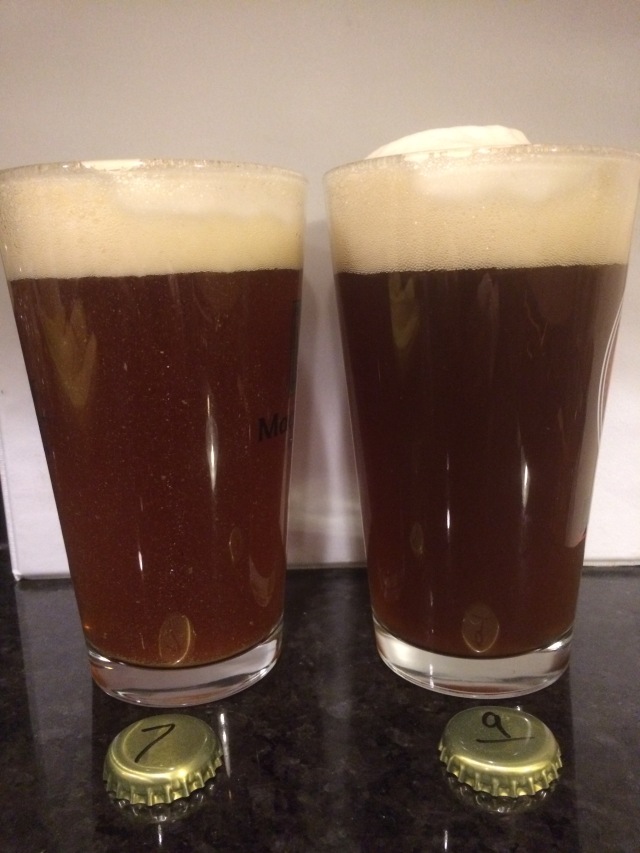This post is one in a series of making small adjustments to a single recipe in order to improve it, learn more about the impact each ingredient has on the finished product, and the art of recipe creation. The rest of the comparison tastings in this series can be found here.
As I did last time, I completed this side by side tasting of Iterations 7 and 9 of this red IPA blind to the beer I was drinking. After pouring each beer and taking my notes on the appearance of each, my wife handed me each beer so that I did not know ahead of time what was in front of me. After completing my tasting of each, I looked to see which beer was which and assigned the corresponding tasting notes to that beer. I will say that both times I’ve done this so far, I have been able to correctly (and easily) distinguish which beer is which during the blind tasting. Granted, I was not blind to which beers were in the mix, but the differences in these Iterations were enough for me to know that they were different beers by taste alone.
Another note with this tasting: as I’ve noted before, the cause of Iteration 7’s much higher OG and subsequently higher ABV is due to a volume error on my part.
Recap
The recipes for each beer are as follows:
Iteration 7
|
Iteration 9
|
Appearance
Both beers poured with a massive head and both had excellent retention, maintaining about a quarter of an inch of foam until the last sip. Iteration 7 was noticeably lighter in color than Iteration 9, which seemed odd to me as I remembered Iteration 7 being darker than others before it. It was a copper/amber hue, but when held to the light, the red showed up a bit more. Iteration 9, on the other hand, was definitely red held to the light or not.

Aroma
Iteration 7 had an aroma of cherry, plum, pear, and orange zest. Iteration 9’s aroma was a little more distinct (I assume due to its relative freshness) and smelled of plum, Bing cherry, orange rind, and had a hint of berry in the nose as well—perhaps blackberry. Strangely enough, one note in the aroma reminded me of a fruit roll up, and not in a bad way.
Flavor
Iteration 7 tasted of black plum, Bing cherry, orange zest, and a hint of pear. Iteration 9, unfortunately, a bit tasted grassy. Aside from that off-flavor, there were also pleasant notes of cherry, plum, orange (flesh), and grapefruit.
Final Thoughts
The color difference is strange to me. It’s almost as if Iteration 7 has grown lighter with time, although I can’t verify that. I don’t trust the lighting in my pictures well enough to be able to state that as a fact, but I did note it as being “definitely red” in my original tasting notes. I’ve definitely seen beers grow darker over time due to oxidation, but I’m unfamiliar with anything that would cause a beer to become lighter over time. I wish I could firmly state that it has grown lighter, but I am basically working off of notes and memory—hardly objective evidence. At the same time, I feel pretty confident this beer is a lighter color than when I first drank it.
Another thing that surprised me was the grassiness in Iteration 9. The last time I tasted this beer, I got almost none of that grassy off-flavor and I thought it had aged out. It’s possible that this beer was slightly more carbonated than the last bottle of Iteration 9 I had and accentuated that flavor more to where it was noticeably present. Otherwise, I’m unsure why I wouldn’t have tasted it last time as well since it was a fairly strong flavor.
